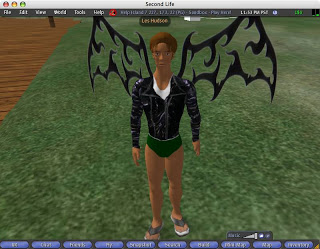
I’ve spent much of today trying to figure out how to do make virtual sound installations in Second Life. From what I’ve seen for sale, it’s probably possible. But SL is not a sharing sort of community. It’s more of a capitalist system. If you want to upload stuff, you’ve got to have the Lindens (10$L / file). If you want land, you need Lindens. So you can get them by sacrificing real money or you can make stuff in SL to sell (but it will cost you to upload the raw materials, so you have to recover your costs) or you can get a virtual job.
there’s no better way to relax from spending all day staring at a computer screen at work than to come home and stare at a computer screen doing my second virtual shift for (semi-real) play money. No wonder the IRS wants to tax this game. No wonder the NYT and other papers are happily wildly inflating the numbers of regular users. No wonder corporations are busily putting up ads. They love this. It’s a model they get. Money buys stuff. There’s no weird “sharing” or other hard-to-grok economies. People sell stuff to each other and so rich folks and corporations get all the cool stuff because they can invest in finding and paying people to create it for them. Second Life is a lot like Real Life.
I think it is on the upswing and will continue to grow, but probably without me. I would have put in the effort to photograph my favorite shirt to upload it as a texture map for my avatar to wear (in human speak: I was taking pictures of my shirt so my player could wear it), but I’m not going to pay for the privilege of generating content on a private network. I’m not opposed to paying for things. I pay for flickr. Because my free account had upload limits that I wanted to exceed. I wanted to exceed them because of positive experiences I had after I uploaded some stuff without paying. First I got positive feedback, then I gave out some money. The new economy is not dead. First, prove to me that you’ve got something worthwhile, then offer me more if I pay you. It’s a good model.


